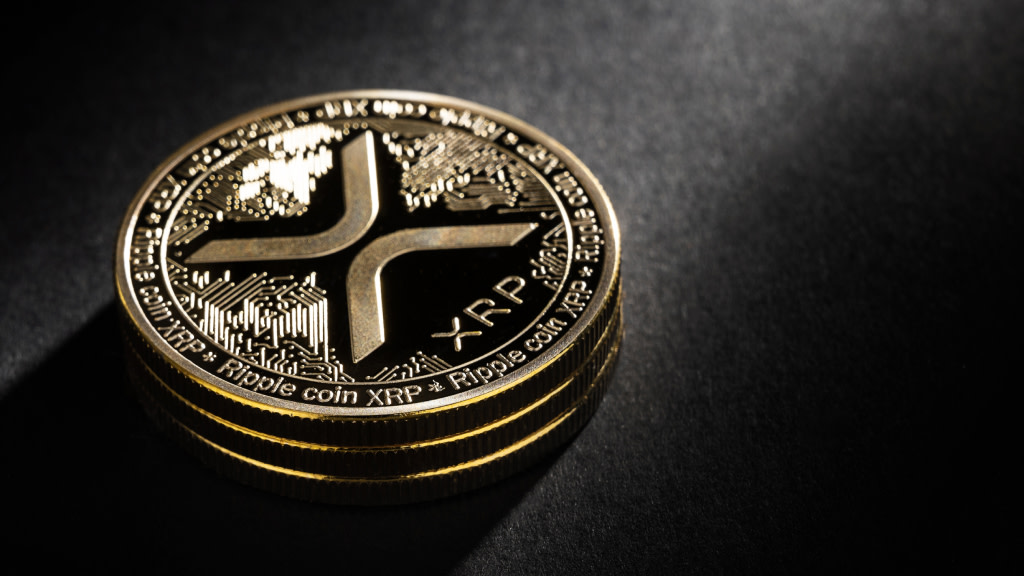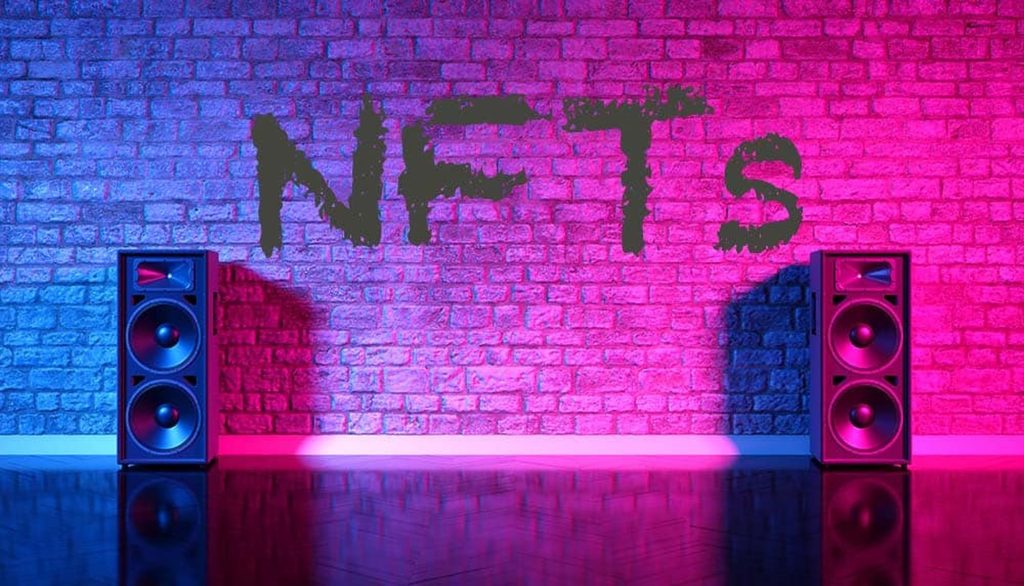The XRPL blockchain, foundational to Ripple’s operations, is poised to revolutionize decentralized finance (DeFi) with its newly launched automated market maker (AMM) protocol, XLS-30.
This development, a collaborative effort with the XRPL community, is designed to enrich the blockchain’s ecosystem significantly.
Ripple‘s announcement of the XLS-30 AMM protocol marks a pivotal expansion in the XRPL ecosystem’s DeFi capabilities, facilitating cross-chain DeFi applications across 50 blockchain platforms.
This innovation aims to complement XRPL’s existing decentralized exchange (DEX), which primarily operates on a traditional order book model lacking the advancements seen in newer DeFi protocols.
A Ripple spokesperson highlighted to Cointelegraph that the AMM is a foundational step towards broader DeFi developments on the XRPL blockchain.
Furthermore, integrating with cross-chain messaging services like Axelar is expected to extend XRPL-based DeFi solutions’ reach and utility across various blockchain ecosystems.
Ripple CTO and XRPL co-founder David Schwartz has shared insights on the AMM’s development journey since June 2022, emphasizing its role in enhancing the DEX’s order book system.
This integration is anticipated to offer optimal pricing by merging AMM and order book systems, while also providing liquidity providers with yield opportunities on their idle assets.
The introduction of liquidity pools for any asset pair issued on XRPL by the AMM aims at a broader user base, including high-volume traders and firms, despite not being specifically designed for institutional traders.
The lack of built-in compliance features in the AMM is seen as complementary to the DEX’s suitability for large financial institutions engaged in high-volume trading of popular tokens.
This new addition to the XRPL DEX is expected to create a more dynamic trading environment for a diverse range of participants, from retail investors to institutional players.
Efforts are underway to include on-chain regulatory compliance mechanisms to further facilitate institutional engagement with the protocol.
The collaboration between Ripple and the XRPL community in developing the AMM underscores the potential of cross-chain messaging protocols to attract investment, developers, and traders from across the blockchain spectrum, promising a more interconnected and efficient DeFi landscape.
To submit a crypto press release (PR), send an email to sales@cryptointelligence.co.uk.
Goldman Sachs has seen a significant resurgence in client interest in cryptocurrencies this year, largely fueled by the U.S. approval of spot Bitcoin exchange-traded funds (ETFs).
According to Max Minton, the head of digital assets for Goldman Asia Pacific, a notable shift has occurred among the firm’s clientele, ranging from renewed activity to explorations into the crypto space.
This shift was detailed in a Bloomberg report dated March 24, highlighting the influence of the recent approval of ten Bitcoin ETFs in January on the traditional market’s embrace of cryptocurrencies.
Minton attributes this revived enthusiasm directly to the ETF approvals, stating, “The recent ETF approval has triggered a resurgence of interest and activities from our clients.”
He observed that the primary interest comes from existing Goldman clients, particularly through options and futures in the crypto domain, with hedge funds being the most engaged segment.
READ MORE: StaFi Liquid Staking Protocol Launches Testnet Awaiting StaFi 2.0 Mainnet Launch
Despite not offering spot crypto products and focusing on crypto derivatives like Bitcoin and Ether options and futures since launching its first crypto trading desk in 2021, Goldman Sachs reported a record $2.8 trillion in assets under management by the end of 2023.
Minton noted a quiet previous year but mentioned an uptick in client interest and activities, including onboarding and transactions, from the beginning of the year.
Clients of Goldman Sachs are leveraging derivatives to tap into the volatility of the cryptocurrency market and to speculate on future price movements.
Bitcoin-related derivatives have emerged as particularly popular among the firm’s active investors.
Furthermore, Minton speculated on the potential impact that the approval of a spot Ether ETF in the U.S. could have, potentially drawing institutional clients towards Ether, although Bloomberg ETF analysts currently estimate only a 35% chance of such an approval by May.
Despite regulatory challenges, Minton emphasized Goldman’s intention to broaden its client base to include asset management funds, banks, and specialized crypto asset firms, signaling a strategic expansion into the crypto market irrespective of immediate ETF developments.
To submit a crypto press release (PR), send an email to sales@cryptointelligence.co.uk.
Bitcoin is on the verge of a supply crunch, according to recent insights from CryptoQuant’s “Weekly Crypto Report” dated March 26.
The analysis highlights a looming “sell-side liquidity crisis” as demand for Bitcoin surges, particularly influenced by the introduction of spot Bitcoin exchange-traded funds (ETFs) in the United States.
This increased demand, coupled with a dwindling supply, signals a pivotal shift in Bitcoin’s market dynamics, potentially altering its supply landscape irreversibly by the early months of 2025.
CryptoQuant’s report illuminates the stark reality of Bitcoin’s dwindling sell-side liquidity.
“Record Bitcoin demand paired with declining sell-side liquidity has resulted in the liquid inventory of Bitcoin plunging to the lowest ever in terms of months of demand,” the platform notes, estimating the current sell-side liquidity inventory can only satisfy the burgeoning demand for about twelve months.
The analysis focuses solely on “accumulating addresses,” which are wallets that have not made any outbound transactions, suggesting the actual demand could be even greater.
“This is only considering demand from accumulating addresses, which may be considered as the lower-end of Bitcoin demand,” CryptoQuant elaborates.
When examining Bitcoin’s availability strictly on United States exchanges, the timeframe during which supply can meet demand halves.
“The Bitcoin liquid inventory drops to six months of demand if we exclude the Bitcoin on exchanges outside the US.
“We exclude these exchanges considering that US spot Bitcoin ETFs will only source Bitcoin from US entities,” the report details.
Ki Young Ju, CEO of CryptoQuant, took to X (formerly Twitter) to discuss the emerging sell-side liquidity crisis.
He commented on the surprising activity of Bitcoins mined in 2010 and dormant since then, now moving to new wallet addresses.
Ju has been a vocal proponent of the ETF supply squeeze theory, previously forecasting a six-month window in mid-March as ETF inflows surged to record highs.
Although there was a brief period of net outflows from these products, recent trends suggest a reversal, with the latest figures from Farside, a UK investment firm, indicating significant net inflows of $400 million on March 25—the largest in two weeks.
This data underscores the growing investor interest in Bitcoin, even as the supply tightens, heralding a potentially transformative period for its market dynamics.
To submit a crypto press release (PR), send an email to sales@cryptointelligence.co.uk.
AI startup Anthropic has decided not to accept investments from Saudi Arabia for the sale of an 8% stake in the company, originally purchased by Sam Bankman-Fried three years ago for $500 million.
This decision is made amidst the bankruptcy proceedings of FTX, and the stake, spurred by the booming interest in AI technologies, is now valued at over $1 billion.
The rejection of Saudi investments is attributed to national security concerns, particularly regarding the potential dual-use of technology for civilian and military applications, which could complicate matters with regulatory bodies like the Committee on Foreign Investment in the United States (CFIUS).
The sale, expected to finalize in the coming weeks, aims to use the proceeds to repay FTX customers.
The shares, classified as class B and lacking voting rights, are valued based on Anthropic’s latest $18.4 billion valuation.
Despite the company’s significant funding rounds totaling about $7 billion from tech behemoths such as Amazon, Alphabet, and Salesforce, the current transaction excludes these entities from the pool of potential buyers.
Instead, the sale is targeted towards a new investor syndicate through special purpose vehicles (SPVs), with venture firms being approached to participate.
Anthropic, known for its advanced language model competing with OpenAI’s ChatGPT, is led by founders Dario and Daniela Amodei.
READ MORE: SEC Delays Decision on Ether ETFs, Casting Doubt on Approval Odds Amidst Growing Skepticism
Although they have the right to vet investors, they are not directly involved in the ongoing sale discussions.
Their acquaintance with Bankman-Fried was facilitated by a mutual interest in “effective altruism,” aimed at leveraging wealth for charitable causes.
While rejecting Saudi Arabian funds, Anthropic is open to investments from other sovereign wealth entities, including the UAE’s Mubadala, which is reportedly considering an investment.
The marketing of FTX’s stake is managed by Perella Weinberg.
Saudi Arabia’s sovereign wealth fund, the PIF, with assets over $900 billion, continues its aggressive technology sector investments, including talks with Andreessen Horowitz for creating a $40 billion AI-focused fund.
These moves align with Crown Prince Mohammed bin Salman’s “Vision 2030 Initiative” to diversify the nation’s economy beyond oil, including investments in global tech companies, sports leagues, and enhancing international financial relationships.
This backdrop adds complexity to Anthropic’s decision, especially as Saudi Arabia seeks to strengthen its tech capabilities amid growing ties with China.
To submit a crypto press release (PR), send an email to sales@cryptointelligence.co.uk.
In an astonishing venture into the digital asset world, Sultan Gustaf Al Ghozali, an Indonesian college student, has once again captured the attention of the cryptocurrency community by securing $1.8 million from a memecoin presale.
This achievement follows his initial success in 2022 when he earned a million dollars by selling non-fungible tokens (NFTs) of his daily selfies over five years, a project dubbed “Ghozali Everyday.”
Ghozali, who had recently graduated, humorously remarked on X that his fortune came from the “stupidest idea” he ever had, signaling his exit from the selfie NFT scene.
However, with the resurgence of interest in memecoins, Ghozali reentered the spotlight by announcing a novel project on March 24 that combines memecoins with NFTs, hosted on the Base blockchain.
This venture quickly exceeded its funding goal, amassing 527 ETH (approximately $1.8 million), though Ghozali promised refunds to contributors who exceeded the presale’s 400 ETH cap.
The broader crypto market has shown a renewed fascination with memecoins, particularly among Solana traders, leading to a staggering $100 million raised in just three days for various presale projects from March 15 to 18.
The Solana memecoin boom has been met with both excitement and skepticism, the latter due to the lack of assurances for investors in these high-risk ventures.
Meanwhile, the Base blockchain, backed by crypto exchange Coinbase, has seen its total value locked double, suggesting a growing interest in it as a potential hub for memecoin activity following Solana’s lead.
On March 23, Base reported a TVL of $2.13 billion, hinting at the possible shift of memecoin enthusiasm to its platform.
Despite the speculative nature of memecoins, highlighted by asset manager Franklin Templeton’s cautionary note on their lack of “inherent value or utility,” the trend continues.
The asset manager conceded that these meme-based tokens could nonetheless yield swift returns for investors, encapsulating the volatile but potentially lucrative allure of cryptocurrency investments.
To submit a crypto press release (PR), send an email to sales@cryptointelligence.co.uk.
The Securities and Futures Commission of Hong Kong (SFC) has issued a warning about a dubious trading platform known as HKCEXP.
This platform has been misleading investors by claiming affiliation with the regulatory body, despite not being registered with the SFC.
The alert comes in the wake of the SFC’s announcement that cryptocurrency exchanges operating in Hong Kong had until February 29 to file for a mandatory operational license or cease operations by May 31.
In response to this directive, the SFC received applications from 22 crypto trading platforms, which included four that had previously applied under a voluntary regime.
However, the challenge of counterfeit entities posing as credible exchanges persists in Hong Kong, with HKCEXP being the latest to deceive investors by falsely proclaiming itself as an “SFC-registered business.”
Further accusations against HKCEXP include providing a fraudulent address in Hong Kong and imposing hefty withdrawal fees, as reported by one of the victims to the SFC.
To combat these fraudulent activities and enhance investor safety, the SFC plans to keep and publicly share a list of crypto platforms awarded operational licenses.
READ MORE: SEC Delays Decision on Grayscale Ethereum ETF, Citing Need for Further Review Amid Industry Scrutiny
Exchanges that missed the application deadline are now restricted in their operational capabilities and are prohibited from conducting marketing activities within the region.
The issue of impersonation extends beyond HKCEXP.
The SFC recently uncovered several fake websites mimicking prominent local cryptocurrency exchanges.
These counterfeit sites aimed to deceive investors by emulating the domains of OSL Digital Securities and Hash Blockchain Limited (also known as HashKey), two of the licensed exchanges in Hong Kong.
To protect investors and uphold the integrity of the crypto trading environment, the SFC encourages the public to consult its official register.
This includes a list of licensed persons and registered institutions, along with a specific directory for licensed virtual asset trading platforms.
By doing so, investors can access accurate information on licensed entities and their official websites, ensuring they engage with legitimate platforms.
To submit a crypto press release (PR), send an email to sales@cryptointelligence.co.uk.
Matthew Hougan, the Chief Investment Officer at Bitwise, has projected a transformative inflow of funds into Bitcoin from institutional investors through exchange-traded funds (ETFs), forecasting as much as $1 trillion could be funneled into the cryptocurrency.
In a detailed memo to investment professionals, Hougan tackled the issue of Bitcoin’s volatility, which has seen its value fluctuate between $60,000 and $70,000.
Despite these short-term swings, he advised a calm and long-term perspective, citing “keep calm and take the long view.”
Hougan pinpointed several pivotal moments on the horizon for Bitcoin, including the anticipated halving event and the approval of spot Bitcoin ETFs on major national platforms such as Morgan Stanley and Wells Fargo.
He also mentioned the ongoing due diligence processes by investment committees and consultants as an essential preparatory step before they can commit to investing in Bitcoin.
The Bitwise executive suggested that in the interim, Bitcoin’s price might experience sideways movement due to minor shifts in sentiment.
READ MORE: Driving Cats NFT Club Drop Begins in Challenge to SHIB, BONK, PEPE and DOGE
However, he remains optimistic about Bitcoin’s future, asserting that it is part of a “raging bull market,” supported by a 300% increase over the past 15 months and solid reasons to believe in continued growth.
Highlighting the significance of the recent spot Bitcoin ETF approvals in January, Hougan emphasized their role in opening the cryptocurrency market to investment professionals.
He outlined the gradual but inevitable shift of investment professionals, who manage trillions of dollars, towards cryptocurrencies, stressing that this transition is expected to unfold over years rather than months.
Hougan celebrated the remarkable success of ETFs, which have seen an inflow of $12 billion since their inception, marking them as the “most successful ETF launch of all time.”
Yet, he views this as just the beginning, with the potential for a massive $1 trillion influx once global wealth managers allocate a mere 1% of their portfolios to Bitcoin.
He concluded, “A 1% allocation across the board would mean ~$1 trillion of inflows into the space. Against this, $12 billion is barely a down payment.”
To submit a crypto press release (PR), send an email to sales@cryptointelligence.co.uk.
Bitcoin‘s price underwent a minor correction, dropping to $68,430 on March 27, after it struggled to surpass the $71,000 mark.
This movement comes amidst signs of waning bullish sentiment among professional traders, highlighted by derivatives data.
The failure to breach this level raises concerns about the stability of the $69,000 price point.
Despite the price rallying from $63,800 to $70,000 in the five days leading to this dip, the Bitcoin futures markets saw a mere $151 million in leveraged short positions liquidated.
This cautious stance by bears is noteworthy, especially considering the significant $888 million withdrawal from U.S. Bitcoin spot ETFs the previous week.
Bitcoin, however, showcased its resilience by bouncing back from a substantial 17.6% fall mid-March, without instigating panic among spot ETF investors.
This resilience was thought to be driven by unexpected inflows into spot ETFs, marking an important trend for bulls ahead of the anticipated April Bitcoin halving.
March 26 reversed the outflow trend, with spot ETFs experiencing $418 million in net inflows, signifying genuine institutional interest despite Bitcoin’s price lingering close to its peak.
Yet, the community remains uncertain if the $69,000 mark will hold as a strong support level.
The sentiment among professional traders has shown a decrease in optimism.
For instance, Binance’s long-to-short ratio among professional traders slightly fell from 1.50 to 1.42, indicating a decrease in bullish sentiment.
Similarly, on OKX, a significant drop in the long-to-short ratio was observed, pointing to a broader sentiment shift among top traders.
This declining optimism could be attributed to broader economic concerns, including the performance of the S&P 500 index and uncertainty over the U.S. Federal Reserve’s interest rate decisions for 2024.
The prospect of rate cuts, typically beneficial for risk-on assets like Bitcoin, seems unlikely in the near term, with the fixed-income markets betting against a rate reduction at the Fed’s upcoming May 1 meeting.
Analysts, including Paul Hickey from Bespoke Investment Group, express concerns over various factors impacting the market, such as the potential risks associated with a lack of earnings growth and the overemphasis on artificial intelligence within the stock market.
Furthermore, the shift in trading preferences among Bitcoin’s top traders, moving away from leveraged long positions, reflects a broader caution influenced by global economic downturns, regulatory actions, and discussions on limiting cryptocurrency transactions.
This cautious sentiment, however, does not necessarily predict a drop below the $69,000 threshold, instead reflecting wider economic and regulatory concerns.
To submit a crypto press release (PR), send an email to sales@cryptointelligence.co.uk.
The European Parliament’s leading committees have recently greenlit a legislation that targets anonymous cryptocurrency transactions through hosted wallets, aligning with efforts to extend the European Union’s Anti-Money Laundering (AML) and Counter-Terrorist Financing directives to the digital currency sector.
This development occurs in the wake of a provisional agreement between the European Council and Parliament to incorporate the cryptocurrency market within the scope of the EU’s stringent AML laws.
Patrick Breyer, representing the Piratenpartei Deutschland (Pirate Party of Germany) in the European Parliament, shared via an X post that this legislative update received approval from the majority of the Parliament’s primary committees on March 19.
Breyer, alongside Gunnar Beck of the Alternative für Deutschland (Alternative for Germany), stood out by voting against the prohibition of unidentified crypto transactions.
The legislation is particularly directed at custodial crypto wallets provided by third parties, including centralized exchange platforms.
The revised AML regulations will also enforce restrictions on anonymous cash and cryptocurrency transactions.
Transactions exceeding 3,000 euros in cash will be banned for commercial dealings, and all cash transactions over 10,000 euros will be prohibited in business contexts.
Predictions from Dillon Eustace, a law firm based in Ireland, suggest that the legislation could be implemented ahead of its expected three-year timeline from the date it becomes effective.
Cryptocurrency networks, known for their permissionless and anonymous access, face significant changes under this new framework.
Following the committee’s endorsement of the bill, Breyer expressed his concerns in a press statement, highlighting the threats to economic autonomy and financial privacy the legislation poses.
He emphasized the right to anonymous transactions as a core value.
The crypto sector’s reaction to these regulatory measures is divided.
While some view the updated AML laws as a necessary step, others worry about potential privacy infringements and limitations on economic freedom.
Daniel “Loddi” Tröster, host of the Sound Money Bitcoin Podcast, pointed out the practical difficulties and broader consequences of the legislation.
He noted its impact on donations and the general use of cryptocurrency within the EU, raising alarms about the possible restrictive effects on the digital currency landscape.
To submit a crypto press release (PR), send an email to sales@cryptointelligence.co.uk.
In a recent development in the United States government’s legal battle against Sam “SBF” Bankman-Fried, former CEO of FTX, prosecutors have moved to liquidate two luxury aircraft before finalizing forfeiture procedures.
The action, detailed in a filing on March 22 with the U.S. District Court for the Southern District of New York, stems from efforts led by U.S. Attorney Damian Williams to mitigate the financial losses on two planes associated with FTX and Bankman-Fried.
The government’s strategy aims to address the depreciation of the assets in question, specifically a Bombardier Global and an Embraer Legacy, which were previously flagged in October 2023 as liable for seizure due to their connection with Bankman-Fried’s criminal activities.
The financial specifics regarding the aircraft, which were initially purchased for $15.9 million and $12.5 million respectively, remain somewhat ambiguous.
Nevertheless, the prosecution plans to allocate up to $1.8 million for their maintenance and an additional $183,000 for the Embraer Legacy’s transfer, contingent upon the sales’ returns being adequate.
An agreement facilitated between the prosecutors, FTX, and its affiliates has paved the way for the Embraer Legacy to be relocated to a Florida airport, facilitating the U.S. Marshals Service (USMS) to initiate the sale process expediently.
The USMS had already taken control of the Bombardier Global earlier in February 2023, pursuant to a legal warrant.
These aircraft represent a fraction of the assets linked to Bankman-Fried that are earmarked for forfeiture following his conviction on multiple criminal charges.
A list of assets disclosed in March included shares in Robinhood, various currencies, cryptocurrencies, and political donations made by SBF during his tenure at FTX.
Neither Bankman-Fried nor his legal representative, Marc Mukasey, have contested the sale of the planes.
Bankman-Fried was found guilty of seven felony charges in November 2023 and is currently incarcerated, awaiting a sentencing hearing scheduled for March 28.
The prosecution has proposed a sentence ranging from 40 to 50 years, while his defense has suggested a more lenient sentence of 6.5 years.
To submit a crypto press release (PR), send an email to sales@cryptointelligence.co.uk.











